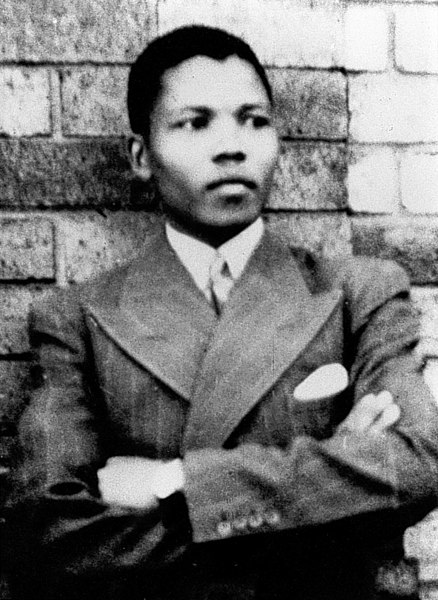Essential Tips for Choosing a Funeral Director
Choosing a funeral director requires thought and consideration to ensure that your loved one’s final...

 Search...
Search...
Sunday July 18 is Nelson Mandela Day. We pay tribute to one of the most remarkable social justice warriors in history.
Against overwhelming odds, Mandela achieved his ambition for abolishing the apartheid government and establishing a true democracy in South Africa. He became the first democratically elected president of South Africa, holding office from 1994 until 1999. He was awarded the Nobel Peace Prize in 1993. Mandela died at his home in Johannesburg on December 5, 2013. Read more about Nelson's life below.
Early Life
Mandela was born 'Rolihlahla Mandela' on 18 July 1918 in a small village called Mvezo, in the Eastern Cape of South Africa. 'Rolihlahla' translates to 'troublemaker'- it seems Mandela was fated to be a disruptive force.
Mandela's father was an advisor to local tribal chiefs, and himself was destined for chiefhood, until a local dispute saw him lose his status and forced the family's move to a smaller village.
Mandela lived alongside his family in a hut, was fed with locally harvested foods, drank from nearby springs and streams and spent his time playing games, crafting toys and wares from tree branches and clay and participating in tribal coming-of-age rituals.
Education
Mandela was baptised in the Methodist Church and became the first in his family to attend school. The name 'Nelson' was bestowed on him by his primary school teacher- it was customary at the time for children to be given 'Christian' names when they entered school.
At the age of 12, Mandela's father passed away, and guardianship was passed to Chief Jongintaba Dalinyebo, the ruler of the Thembu people. This hugely impacted Mandela's life, as he moved from the small village to the tribal capital to live with Jongintaba and his family.
It was during his time here he was first exposed to the struggle of his people. Visiting elder chiefs shared their stories of African history, with Mandela learning how the African people had lived peacefully and freely prior to white settlement.
After completing primary and secondary school, Mandela went to University of Fort Hare, the only place Black constituents could attend university in South Africa. He served on the Student Representative Council, who committed a boycott, ultimately resulting in his expulsion from the university.
Following his return home, Jongintaba issued an ultimatum to Mandela- he could either return to Fort Hare at the beginning of the next semester, or a marriage would be arranged for him. Mandela was not satisfied with either option, and instead ran away to Johannesburg.
In Johannesburg, he worked as a security guard, whilst continuing his university studies via correspondence. Following this, he enrolled to study law at the University of Witwatersrand.

Political Activism
Mandela first became involved in organised politics when he joined the ranks of the African National Congress (ANC) in 1942. The African National Congress was positioned to challenge the ruling minority white Apartheid Government, whose policies restricted the rights and freedoms of the Black population.
In 1952, having completed his studies in Law, Mandela founded the first Black run law firm- Mandela & Tambo - with his colleague Oliver Tambo, whom he had met at Fort Hare. The firm specialised in providing legal support and representation to disadvantaged Black persons.
In 1956, Mandela was charged with treason, but was ultimately acquitted.
Imprisonment
In 1961, Mandela led an offshoot of the ANC called Umkhonto we Sizwe (Spear of the Nation), who used more aggressive guerilla warfare tactics to oppose apartheid. During this time, Mandela organised a 3-day national worker's strike, which resulted in him being arrested and sentenced to five years imprisonment. This sentence was suspended.
In 1964 Mandela was again charged- this time with sabotage, treason and violent conspiracy. On June 12, 1964, he was found guilty and sentenced to life imprisonment. He was released on February 11, 1990.
During his time in prison, Mandela's reputation grew and he became the figurehead for the anti-apartheid movement. Whilst in prison, Mandela held talks with the ruling government, and began making plans for a meeting between the apartheid government and the ANC.
Mandela was offered conditional release on three occasions throughout his imprisonment, but refused to compromise his political position in exchange for his personal freedom.

Path to Presidency
Upon his release from prison, Mandela worked with the president, Frederik Willem de Klerk to continuing striving towards ending apartheid.
Negotiations culminated in the country's first inclusive democratic election on 27 April, 1994. Following this election, at age 77, Mandela was inaugurated as South Africa's first black president. He led the nation until his retirement from politics in 1999.
Death & Legacy
After retiring, Mandela began the Nelson Mandela foundation. He dedicated his efforts to building schools and clinics to support the emerging HIV/AIDS crisis. He worked tirelessly to continue supporting the disadvantaged and oppressed.
Mandela died at his home in Johannesburg on December 5, 2013 at the age of 95. At the time of his death, South African president Jacob Zuma said "let us reaffirm his vision of a society in which none is exploited, oppressed or dispossessed by another".
Mandela's legacy endures as he remains a token and inspiration for those around the world fighting social, racial and political injustice.
By Lydia Moreland
Sources: